Did you ever eat a spruce tree? I eat them! Come and see how to identify spruce trees, get some tips on picking spruce tips -- the new spring growth -- and then see a few ways that I have been eating spruce trees. What I cover works for all kinds of spruce!
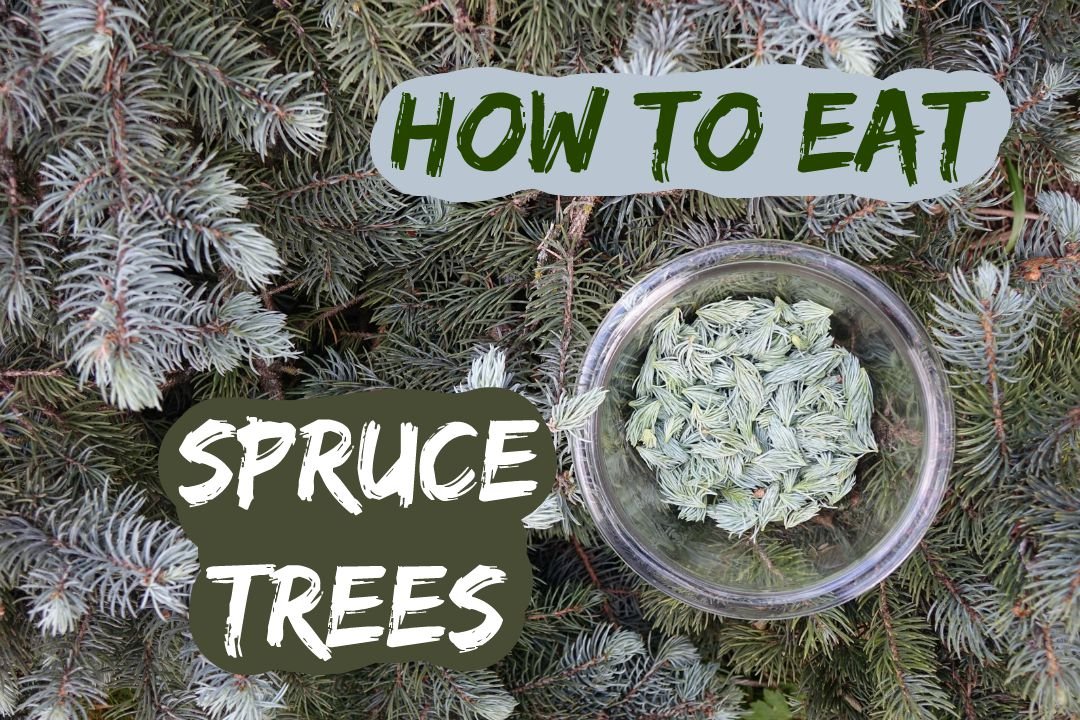
Spruce Needles Come From Spruce Trees
Spruce trees are evergreen conifers. The most reliable way to identify a spruce is to look at the needles on a branch. Each needle comes out of the branch alone, by itself, not in a group. And each needle has a stalk, a little stump, a peg, which is the distinguishing feature of a spruce.
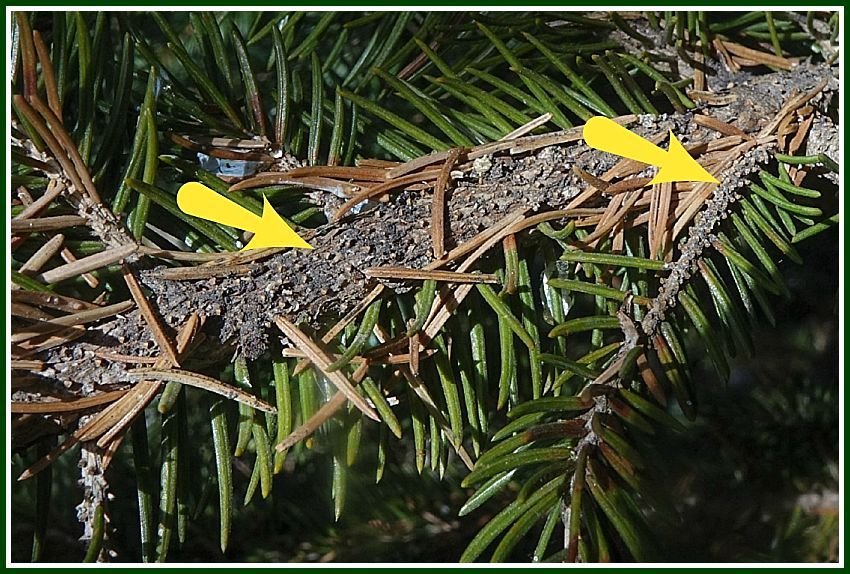
White spruce, red spruce, black spruce, blue spruce, Norway spruce, Sitka spruce, and Engelmann spruce are the kinds you are most likely to see. Even if you don't live in a northern forest, spruce are often planted in yards and parks, especially Colorado blue spruce and Norway spruce.

Picking Spruce Tips
In the spring, when the new growth starts to come out, is a great time to get food from the spruce tree. The new growth is easy to identify because it is brighter in color and the needles are soft.
Picking spruce tips from a standing tree is a good exercise in self-control and judgment. Every tip that's picked is pruning the tree. That tip will not grow back. So don't pick too many spruce tips from one branch. And focus on the tips that will ultimately be shaded and die back anyway - that means the tips in the interior of the tree and the tips close to the ground.
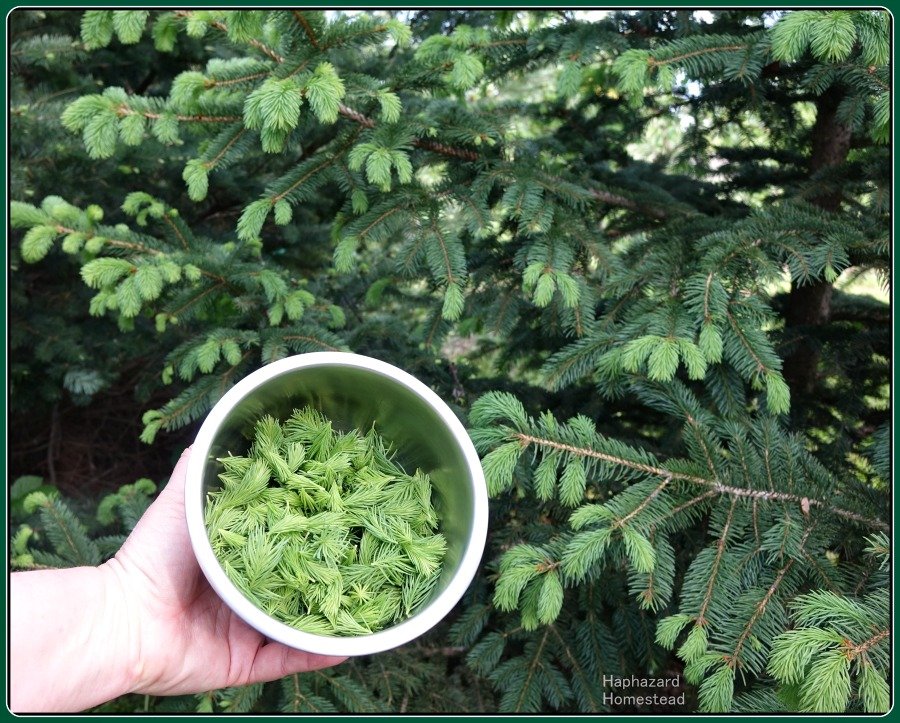
There is a way to get a lot of spruce tips - cut entire branches from the tree! I have to prune my Colorado blue spruce to maintain visibility from my driveway. So I wait until spring to cut the branches. Then I can relax and harvest the spruce tips at my leisure. I prune branches from my Engelmann Spruce, too, focusing on branches that will be shaded and self-pruned soon.
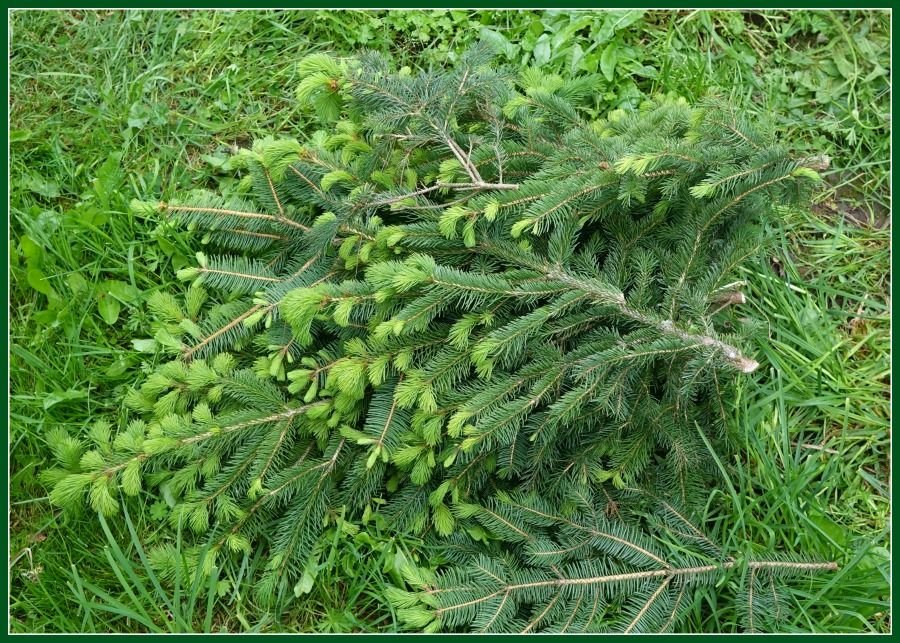
I think the Colorado Blue Spruce is my favorite of the spruce trees I have eaten. But they are really prickly. Be careful not to get the mature needles in your picking, because they can be as stiff and hazardous as fish bones!
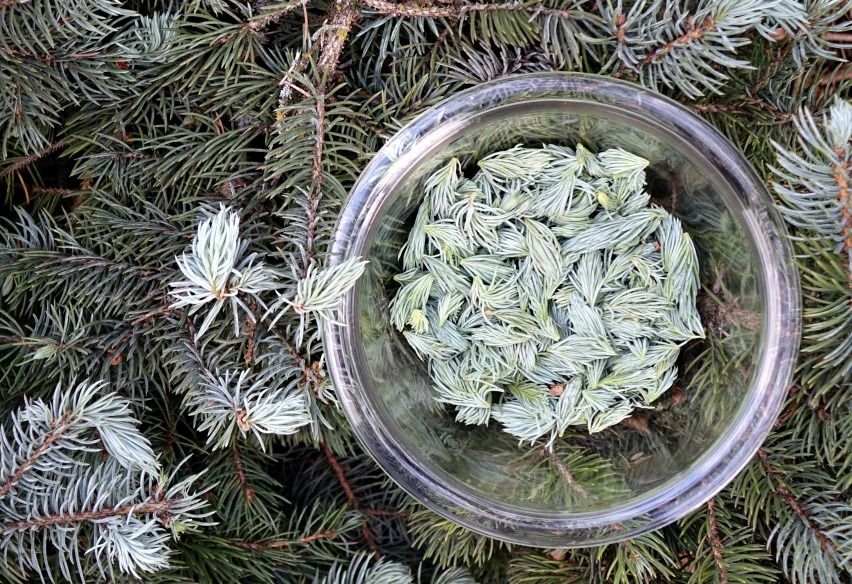
What Do Spruce Needles Taste Like?
Every kind of spruce tree has a little different flavor. It's a combination of citrus and resin. Spruce trees will have their new tips at different stages of growth, so there's a lot of selection. The tiniest tips have the mildest flavor.

The resin flavor of the new growth of spruce tees will taste the strongest straight off the tree. When the tips are soaked in water or other liquids, the resin flavor takes as step back and the citrus flavors step forward.
In our regular food, we don't encounter the spruce's resin flavor, so it can seem strong and strange. If you like foods like highly hopped beer, strong coffee, or dark chocolate, you might really like the taste of spruce. And once you get acclimated to that resin taste, it's easy to want more!
Cooking With Spruce Tips
Spruce tips are good to eat in so many ways! I'll show you how in future posts. But here's a menu of some ways I've enjoyed the spring growth of spruce trees.
The easiest way to enjoy spruce tips is to soak them in jar of water for a few hours, in the sun. That spruce water tastes incredible -- it's like drinking the forest! That water also makes a great Spruce Tree Sorbet. And the soaked spruce tips to make some amazing Pine Pollen - Spruce Tree Cookies.
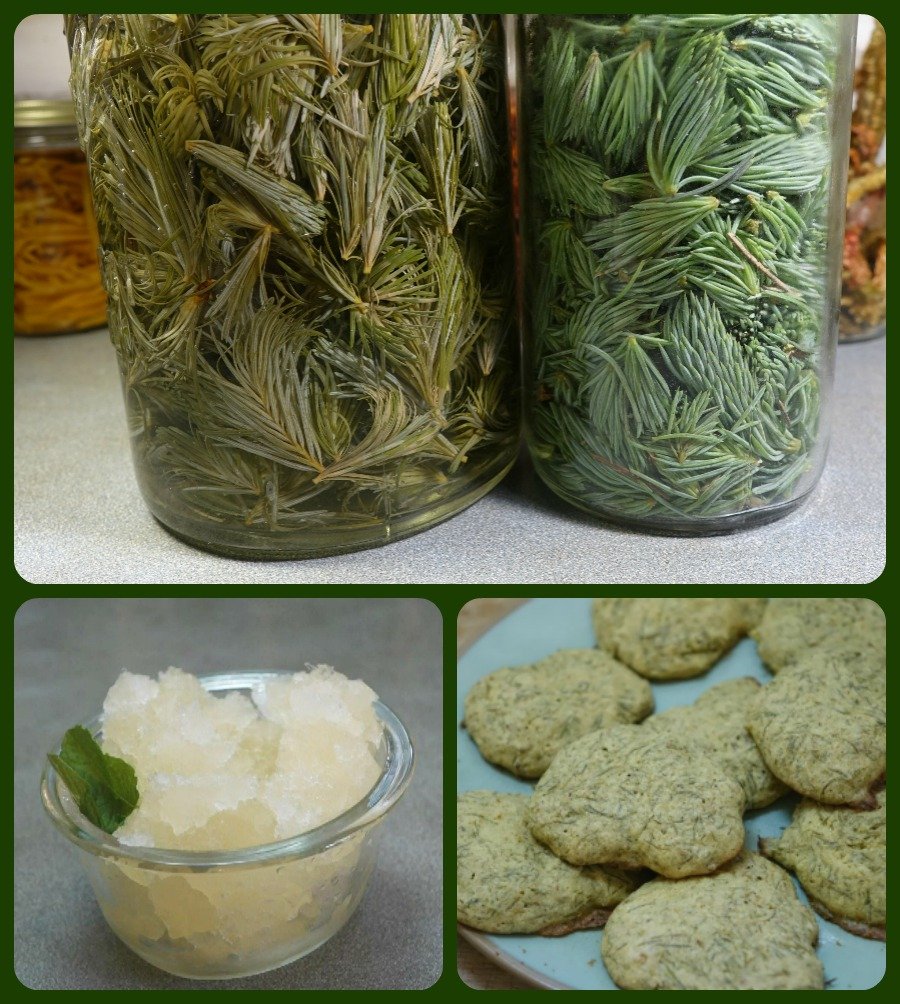
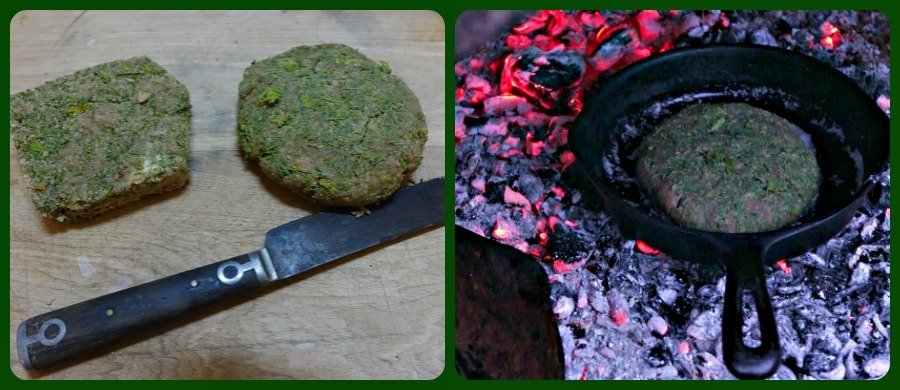
The chopped up spruce tips also make a great version of balsamic vinegar with only 3 other ingredients that are probably in your house: honey, peppercorns, and cider vinegar. I use my Spruce Tree Balsamic Vinegar in a lot of ways that I'll show in future posts. But you can see one way I use it, along with a video on how to make it, in this post: A Garden Harvest Repast.
If you want to see how to put all this into action, with more details, here's my video on how to eat spruce trees:
What Do You Think?
I hope you get a chance to enjoy something from the spruce tree smorgasboard!
- How do you eat spruce trees?
- Would you like to eat spruce trees?
- Do you have any spruce trees near you?
- Do you eat any other trees?
If you ever eat any any spruce trees, I would really like to know about it! Put @haphazard-hstead in your post so I'll be notified and use the #foraging tag so all the Steemit foragers can find it! I'll be eating spruce trees in other ways , too. If you follow me, you stand a better chance of seeing those posts.
Plant List
Spruce: Picea genus, Family Pinaceae (Pine family)
- White spruce: Picea glauca
- Red spruce: Picea rubens
- Black spruce: Picea mariana
- Blue spruce, also known as Colorado Blue Spruce: Picea pungens
- Norway spruce: Picea abies
- Sitka spruce: Picea sitchensis
- Engelmann spruce: Picea engelmanni
I write about foraging because I believe that we can all have lives that are richer, more secure, more grounded, and more interesting by getting to know the plants and the land around us – in our yards, our parks, and our wilderness.
I would like Steemit to be the premier site for Foraging on the Internet! If you have any thoughts about foraging, or experiences to share, write a post and be sure to use the Foraging tag. And check out the @foraging-trail to see curated quality posts about foraging. Happy Foraging!
Related Posts
If you want to see how my Colorado blue spruce tree held up in a giant ice storm last winter, check out this post: The Great Willamette Valley Ice Storm of '16: Blue Spruce and Redcedar Trees.
If you are interested in eating Pine Trees, here's a post that might help: How To Harvest Pine Pollen.

